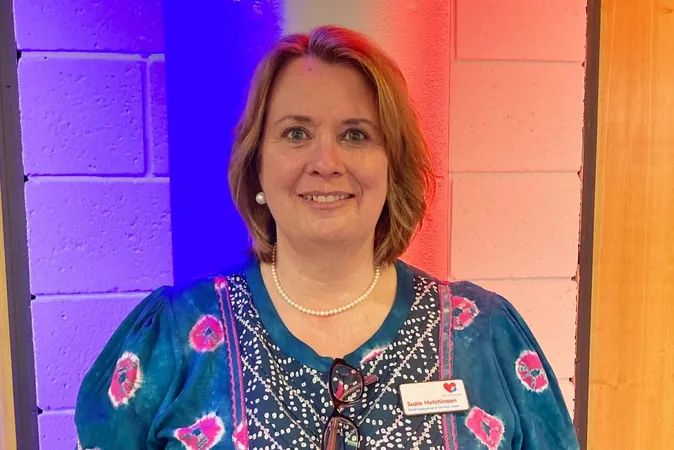
Revolutionizing Lives: The Fight for Better Outcomes for Single Ventricle Heart Patients!
2024-11-22
Author: Li
Introduction
As advancements in medical and surgical treatments for congenital heart disease (CHD) continue to soar, the conversation is shifting from merely saving lives to enhancing the quality of life for survivors. Once considered nearly impossible, the journey for babies born with a single ventricle heart has transformed remarkably over the past few decades.
Historical Context
Just thirty years ago, the grim reality was that most infants with single ventricle anatomy succumbed shortly after birth. Medical teams poured their expertise into offering these infants a fighting chance, focusing on reconstructive surgeries designed for those born with conditions like hypoplastic left heart syndrome (HLHS). While pioneering treatments saved lives, many children faced uncertainty as they underwent multiple palliative surgeries during their early years, grappling with high mortality rates.
Current Outcomes
Fast forward to 2024, and the landscape of single ventricle heart treatment is notably different. Current survival rates indicate that around 75% of children born with this challenging condition now make it to their fifth birthday—and an impressive 75% of these survivors live to see the age of 25! Numerous advancements have contributed to this success, including earlier detection through antenatal diagnoses, precise assessments to determine treatment complexity, a deeper understanding of the impacts of the Fontan procedure, and the development of specialized surgical techniques.
Ongoing Challenges
Yet despite this progress, patients with single ventricle hearts remain on a challenging path. With only half a heart, they face a unique array of health concerns and limitations that significantly impact their overall well-being. Research reveals that these individuals typically possess only about 50% of the energy levels of their peers with healthy hearts. Notably, a significant proportion—around one-third—faces additional complications due to associated genetic conditions, while a substantial number struggle with neurodiversity issues, including ADHD and autism.
Mental Health Concerns
Mental health concerns, particularly anxiety and depression, plague these individuals at rates five times higher than those seen in comparable age groups. As these patients mature, the pressures on their already challenged hearts become exacerbated by growth, often leading to conditions such as arrhythmias and heart failure, as well as complications related to their prior surgeries.
Heart Transplant Considerations
The promise of a heart transplant often looms large at the starting point of their journey; however, the reality is sobering. There remains a scarcity of viable transplant hearts, and for patients with single ventricle anatomy, the procedure is fraught with complexity, compounded by past surgeries and increased levels of antibodies in their bodies.
Quality of Life Questions
Moreover, the path to adulthood ushers in new questions about quality of life—should they start families, how can they optimize their energy, and what does independence look like for them in the workplace? Incredibly, many of these survivors become inspirational trailblazers, demonstrating immense resilience as they strive to live their lives to the fullest despite these trials.
The Role of Advocacy Organizations
To address these critical issues, organizations like Little Hearts Matter are at the forefront of efforts to improve the futures of those living with half a functioning heart. This year marks their 30th anniversary, and they are gearing up to host a national medical conference aimed at uniting congenital cardiac teams from the UK and Ireland in calls for actionable change.
Conference Objectives
Key objectives for this transformative event include the establishment of dedicated specialist nurses who address both medical and lifestyle needs, providing tailored educational assessments to unlock full academic potential, and enhancing mental health support to cope with the ongoing difficulties posed by their conditions. The recognition of disabilities to ensure proper benefit access, along with prompt medical assistance as heart function evolves, will also be highlighted.
Conclusion
As we celebrate the remarkable strides made in treating single ventricle hearts, it’s essential to focus our thoughts not just on survival but on living well. The future for these incredible individuals is bright, and together, we can ensure they create opportunities for themselves to thrive. Stay tuned for groundbreaking updates on this ongoing journey!



 Brasil (PT)
Brasil (PT)
 Canada (EN)
Canada (EN)
 Chile (ES)
Chile (ES)
 España (ES)
España (ES)
 France (FR)
France (FR)
 Hong Kong (EN)
Hong Kong (EN)
 Italia (IT)
Italia (IT)
 日本 (JA)
日本 (JA)
 Magyarország (HU)
Magyarország (HU)
 Norge (NO)
Norge (NO)
 Polska (PL)
Polska (PL)
 Schweiz (DE)
Schweiz (DE)
 Singapore (EN)
Singapore (EN)
 Sverige (SV)
Sverige (SV)
 Suomi (FI)
Suomi (FI)
 Türkiye (TR)
Türkiye (TR)